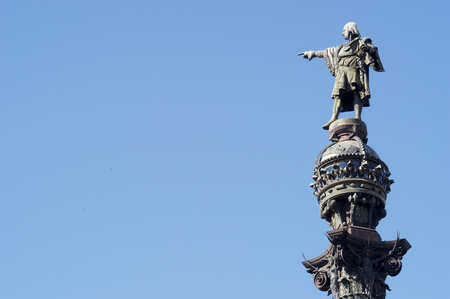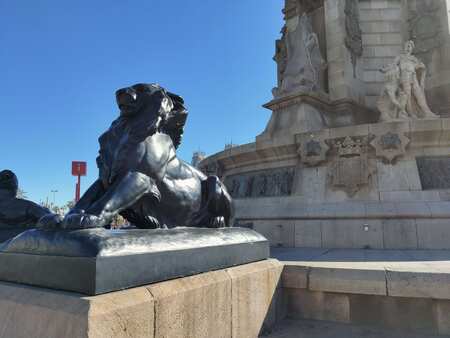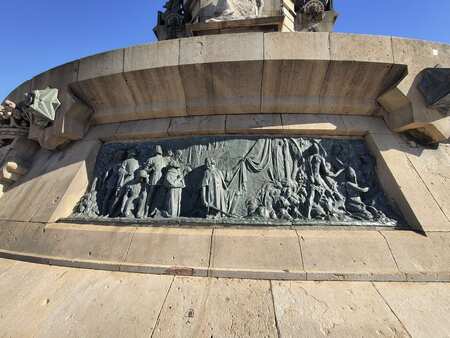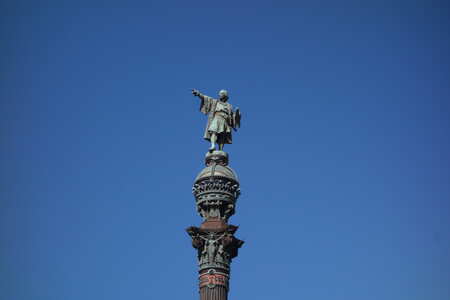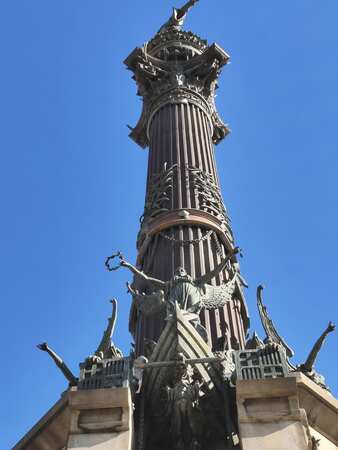The Monument of Christopher Columbus
The monument of Christopher Columbus is a 60 meters high column, It was put up for the universal exposition of 1888 in homage to the famous explorer. The sight of the city is remarkable.
Elevator to the top of the Monument a Colom ticket
The Columbus Monument "Monument a Colom" in Catalan, also known as "Monumento a Colón and Mirador de Colón" in Spanish, was built for the Barcelona World Fair (1888). It is located at the bottom of Barcelona's Ramblas, on the spot where Columbus returned to Spain after his first voyage to the Americas. The monument recalls that it was in Barcelona that Christopher Columbus reported to Queen Isabel and Ferdinand after his most famous voyage.
The 7-metre high statue was sculpted by Rafael Atché and is said to represent Columbus pointing towards the New World with his right hand, while holding a scroll in his left hand. An amusing detail is that instead of pointing west, i.e. towards the New World, the statue points east, i.e. towards his home town of Genoa.
The statue stands on top of a pedestal, on which is inscribed the word "Tierra" (Land).

Monumento a Cristóbal Colón - Barcelona
Another interesting anecdote is that originally the statue at the top of the column was supposed to represent the Greek goddess Athena, who symbolised the city of Barcelona. However, the organisers of the World Fair eventually decided to replace the statue of Athena with a statue of Christopher Columbus, which would be more appropriate for an international exhibition. The statue was installed on top of the column in 1888.
Christopher Columbus, the European navigators and the story of a discovery
We know that indigenous peoples who had been living in America for thousands of years discovered America long before the arrival of European explorers.
However, if we talk about the discovery of America by European explorers, the Genoese navigator Christopher Columbus is generally credited with the discovery of America in October 1492, when he reached the Caribbean after crossing the Atlantic Ocean with three ships financed by the Spanish crown.
Nor was he the only explorer at that time in that same part of the oceans; John Cabot explored the coasts of North America in 1497, Amerigo Vespucci explored the coasts of South America in 1499-1502 - he gave his name to that continent - and Jacques Cartier explored the St. Lawrence River in North America in 1534.
When he died on 20 May 1506, Columbus was still convinced that he had reached the Indies. But his record as an explorer was exceptional: he discovered many of the Caribbean islands and named several of them, including Guadeloupe, Marie-Galante, Trinidad and Dominica. Columbus' name was later attributed to several territories in America: Colombia, Gran Colombia, British Columbia.
The Monument of Christopher Columbus
Pl. Portal de la Pau, 08002 Barcelona, SpainArea: Barrio Gótico
Opening hours: Get to the top of the statue and enjoy a breathtaking view of the city and the Port of Barcelona every day from 8:30 to 14:30
Metro/Bus: Metro: L3 Drassanes
Barcelona metro map
Hotels: Find your hotel in Barcelona in this area.
